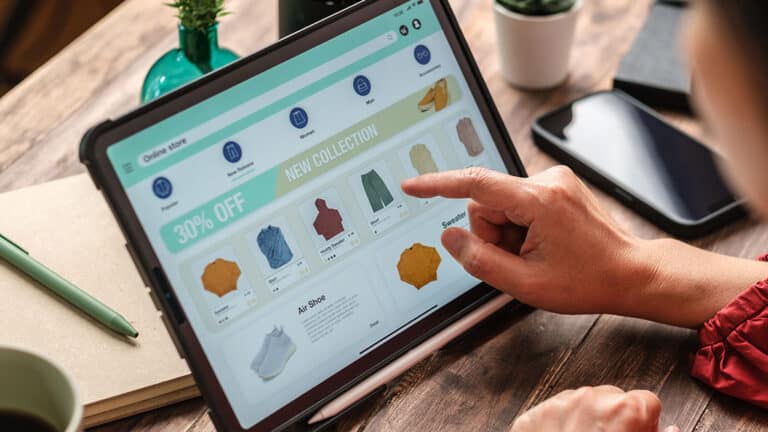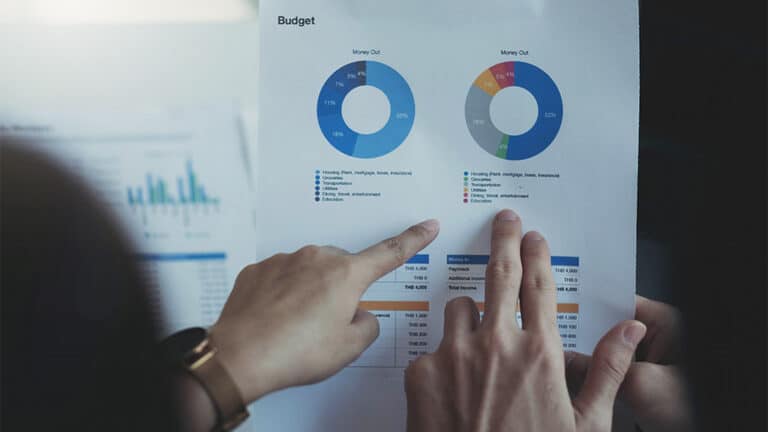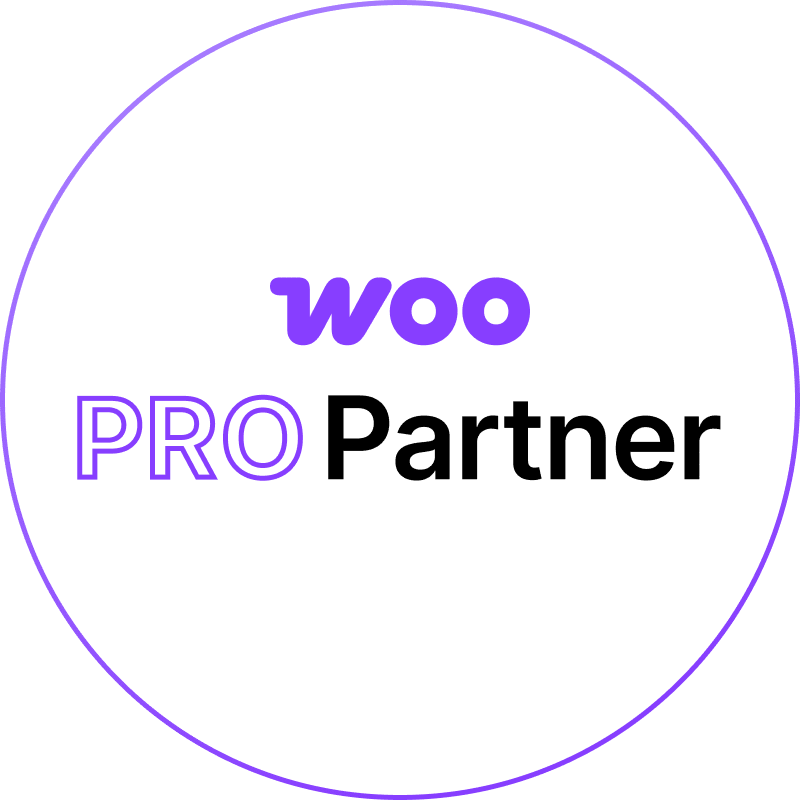Top Google Ads Strategies for E-Commerce Brands in 2025
In the ever-evolving landscape of e-commerce, staying ahead requires a firm grasp of the latest digital marketing strategies. As we step into 2025, Google Ads continues to be one of the most powerful tools for e-commerce brands to drive traffic, increase sales, and achieve sustainable growth. However, leveraging this platform effectively demands more than a basic understanding; it requires a nuanced approach that adapts to industry trends, consumer behavior, and advancements in technology.
Google Ads has consistently evolved to meet the needs of advertisers, and 2025 is no exception. With automation playing a more prominent role, new ad formats emerging, and data privacy regulations reshaping how marketers operate, it’s essential for e-commerce businesses to refine their strategies. Whether you’re running campaigns for a small online store or a global retail brand, optimizing your approach to Google Ads can make the difference between average performance and outstanding results.
This guide outlines actionable strategies tailored for e-commerce brands looking to maximize their Google Ads ROI in 2025. From leveraging Performance Max campaigns to prioritizing first-party data, these tips will help your brand maintain a competitive edge in the ever-growing e-commerce space.
Leverage Performance Max Campaigns
Performance Max campaigns have revolutionized how advertisers manage their Google Ads. Introduced to simplify campaign management and maximize reach, this all-in-one campaign type utilizes automation and machine learning to deliver ads across multiple Google channels, including Search, Display, YouTube, Discover, and more. For e-commerce brands, this means more opportunities to reach customers at every stage of the buyer’s journey.
The power of Performance Max lies in its ability to consolidate your advertising efforts into a single campaign while using data-driven insights to optimize ad placements. By analyzing your audience’s behaviors and preferences, Google automatically adjusts bids, creatives, and placements to achieve the best possible results. This automation saves time and ensures that your campaigns remain efficient and effective.
To make the most of Performance Max, focus on providing high-quality inputs. Ensure that your product feed is accurate and optimized, as this data directly impacts how your ads are displayed. Additionally, create a variety of compelling ad creatives, including videos, images, and text, to engage users across different platforms. Regularly review performance data and adjust your strategy as needed to align with campaign goals. When executed correctly, Performance Max campaigns can significantly boost your e-commerce sales while streamlining your overall PPC management services strategy.
Focus on First-Party Data
With third-party cookies being phased out and data privacy regulations becoming stricter, first-party data is now more critical than ever. For e-commerce brands, collecting and utilizing first-party data provides a significant advantage in creating personalized and impactful advertising campaigns. This data allows you to better understand your customers’ preferences, behaviors, and purchase intent, which is invaluable for crafting effective Google Ads strategies.
To collect first-party data, start by building strong customer relationships. Offer incentives such as discounts or exclusive content in exchange for email signups or survey participation. Implement loyalty programs that reward customers for repeat purchases, encouraging them to share more information about their preferences. Use tools like Google Analytics 4 (GA4) to integrate and analyze this data effectively.
Once you have a solid first-party data foundation, leverage it to create customized audiences for your Google Ads campaigns. For example, you can target past buyers with upsell offers or re-engage users who abandoned their carts with personalized ads. First-party data also enables you to create lookalike audiences, helping you expand your reach by targeting users similar to your existing customers.
By prioritizing first-party data, you can reduce reliance on less reliable third-party data sources and create campaigns that feel more relevant and engaging to your audience. This approach not only improves ad performance but also fosters trust with your customers by respecting their data privacy.
Optimize Product Feed for Shopping Ads
An optimized product feed is the cornerstone of successful Shopping Ads for e-commerce businesses. In 2025, with increasing competition and consumers expecting highly relevant product recommendations, ensuring your product feed is impeccable has never been more critical. Google uses this data to determine how and where your products appear, so a well-structured feed directly impacts ad performance and conversions.
Start by crafting detailed and accurate product titles that include key attributes like brand, size, color, and material. For example, instead of a vague title like “Running Shoes,” use “Nike Men’s Air Zoom Pegasus 39 Running Shoes – Black, Size 10.” Product descriptions should also be concise yet informative, highlighting key features and benefits that appeal to your target audience. Use high-quality images that showcase the product from multiple angles, as visuals play a crucial role in attracting clicks.
Ensure your feed is up to date by regularly syncing inventory levels, pricing, and availability. Outdated information can lead to disapproved ads, wasted spend, or a poor user experience. Additionally, include relevant product categories and unique identifiers, such as GTINs, to ensure Google can match your products with relevant search queries accurately.
For e-commerce businesses with large inventories, tools like Google Merchant Center can automate much of the feed management process. Merchant Center not only helps you organize your feed but also provides insights into issues that may be impacting performance. By investing time in optimizing your product feed, you create a strong foundation for Shopping Ads that drive clicks and conversions.
Utilize Dynamic Remarketing
Dynamic remarketing is an essential strategy for e-commerce brands to re-engage potential customers and increase conversion rates. Unlike standard remarketing, dynamic remarketing tailors ads to individual users by showcasing the specific products they’ve interacted with on your site. This personalized approach is highly effective in bringing users back to complete their purchase.
For instance, if a customer browses your site and looks at a specific handbag but doesn’t purchase, dynamic remarketing allows you to serve them an ad featuring that exact handbag. You can even include additional incentives like a discount or free shipping to encourage them to convert. This level of personalization helps keep your brand top-of-mind and reduces cart abandonment rates.
Setting up dynamic remarketing requires integrating your product feed with Google Ads and implementing dynamic remarketing tags on your website. These tags collect data about the products users view, add to their cart, or purchase, enabling you to create highly targeted ads. Additionally, you can segment audiences to tailor your messaging further—for example, targeting users who viewed multiple products differently than those who abandoned their cart.
Ad creatives should be visually appealing and consistent with your brand identity. Use compelling calls to action like “Hurry, Limited Stock!” or “Still Thinking About This?” to create urgency. Dynamic remarketing not only improves your chances of converting past visitors but also helps you maximize your Google Ads budget by targeting users most likely to convert.
Prioritize Mobile-First Ad Strategies
As mobile shopping continues to dominate the e-commerce landscape in 2025, prioritizing mobile-first ad strategies is no longer optional—it’s essential. Mobile devices now account for the majority of online shopping traffic, and consumers expect a seamless experience from ad click to checkout. Google Ads provides a range of tools to help advertisers cater specifically to mobile users, ensuring their campaigns meet this growing demand.
The first step is ensuring your landing pages are mobile-friendly. A slow or poorly optimized page can result in high bounce rates and wasted ad spend. Use Google’s Mobile-Friendly Test to assess your site’s performance and address any issues with speed, navigation, or layout. Landing pages should load quickly (ideally under three seconds) and feature clear calls to action that encourage users to take the next step.
Ad creatives should also be designed with mobile users in mind. For example, use vertical video formats that fit seamlessly into mobile feeds on platforms like YouTube and Discovery. Short, engaging headlines paired with eye-catching visuals are more likely to capture attention on smaller screens. Additionally, mobile extensions like click-to-call or location-based ads can improve conversions by making it easier for users to interact with your business.
Another critical element of mobile-first strategies is leveraging advanced targeting options. Use audience segmentation to reach mobile shoppers at different stages of the buying journey, from awareness to conversion. Combine this with Smart Bidding strategies to ensure your ads are shown at the right time and place to maximize ROI.
By focusing on mobile-first ad strategies, e-commerce brands can deliver a seamless shopping experience that meets the expectations of today’s on-the-go consumers. This approach not only improves ad performance but also strengthens your brand’s ability to compete in an increasingly mobile-driven market.
Experiment with New Ad Formats
As digital advertising evolves, e-commerce brands need to explore new and emerging ad formats to stay competitive. In 2025, platforms like Google are rolling out innovative ad formats designed to capture attention and engage audiences more effectively. For e-commerce businesses, experimenting with these formats can provide unique opportunities to connect with potential customers in ways traditional formats cannot.
One of the most promising options is YouTube Shorts Ads. With the growing popularity of short-form video content, this format allows brands to showcase products in creative, bite-sized videos that grab attention quickly. For example, an e-commerce brand could use YouTube Shorts to demonstrate how a product works, highlight unique features, or share testimonials. These videos can drive significant engagement while boosting brand awareness among younger, mobile-first audiences.
Another format to explore is Discovery Ads. These ads appear on visually rich platforms like Gmail, YouTube, and the Google Discover feed, offering a more immersive shopping experience. They are particularly effective for showcasing lifestyle imagery and aspirational content that aligns with your target audience’s interests. Discovery Ads are an excellent way to build brand affinity while driving conversions through visually appealing creatives.
Interactive ad formats are also gaining traction, enabling users to engage with content directly within the ad. For instance, carousel ads allow e-commerce brands to showcase multiple products or features in a single ad, while augmented reality (AR) ads let users visualize products in their environment. By testing these new formats, e-commerce brands can discover fresh ways to capture attention and differentiate themselves from competitors.
Use Audience Segmentation and Smart Bidding
Targeting the right audience is the cornerstone of any successful Google Ads campaign. In 2025, advanced audience segmentation and Smart Bidding strategies have become indispensable tools for e-commerce brands looking to maximize their ad performance. These features allow you to reach the most relevant users with tailored messaging while optimizing your budget.
Audience segmentation involves dividing your target audience into smaller, more specific groups based on factors like demographics, interests, behaviors, and purchase intent. For example, an e-commerce brand selling athletic wear might create separate audience segments for fitness enthusiasts, runners, and yoga practitioners. By crafting personalized ads for each segment, you can deliver more relevant content that resonates with users, increasing the likelihood of conversions.
In addition to segmentation, Smart Bidding leverages Google’s machine learning algorithms to optimize bids in real time. This feature uses historical data and signals like device type, location, time of day, and user behavior to set bids that maximize your campaign goals, whether it’s clicks, conversions, or return on ad spend (ROAS). For instance, Target ROAS bidding can help e-commerce brands ensure they’re generating a profitable return on their advertising investment.
To get the most out of these tools, regularly analyze your audience data and campaign performance. Test different audience segments and bidding strategies to identify what works best for your brand. Combining audience insights with Smart Bidding ensures your ads are shown to the right people at the right time, driving higher engagement and better results.
Focus on Local Inventory Ads (LIA)
For e-commerce brands with physical store locations, Local Inventory Ads (LIA) are a game-changing tool to bridge the gap between online and offline shopping. LIAs showcase your in-store products to nearby shoppers searching on Google, helping drive foot traffic and local sales. This format is particularly effective for reaching customers who prefer to see or pick up products in person.
Local Inventory Ads work by displaying product availability, pricing, and store information directly within search results. For example, if a customer searches for “women’s running shoes near me,” LIAs can highlight your store’s inventory, complete with directions to the nearest location. This seamless integration of online and offline channels provides a convenient shopping experience that encourages customers to visit your store.
To use LIAs effectively, ensure your product feed is accurate and up to date, including real-time inventory levels and location details. Use Google’s Store Pickup option to highlight curbside or in-store pickup services, catering to customers who value speed and convenience. By incorporating LIAs into your Google Ads strategy, you can attract local customers and boost sales both online and offline.
Monitor Analytics and Adapt Strategies
Success in Google Ads isn’t just about setting up campaigns—it’s about constantly analyzing performance and adapting strategies to improve results. In 2025, e-commerce brands must prioritize real-time analytics and data-driven decision-making to stay ahead of the competition.
Start by identifying the key metrics that align with your campaign goals. For example, if your objective is to drive conversions, focus on metrics like conversion rate, cost per conversion, and ROAS. If brand awareness is your priority, track impressions, click-through rates (CTR), and reach. Google Ads provides robust reporting tools to help you monitor these metrics and gain actionable insights.
Regularly reviewing your campaign performance allows you to identify areas for improvement and make necessary adjustments. For instance, if certain keywords or ad creatives aren’t performing well, consider reallocating your budget to higher-performing assets. Additionally, use A/B testing to experiment with different headlines, images, and calls to action, refining your approach based on what resonates with your audience.
Adapting to changes in consumer behavior and industry trends is also crucial. Stay informed about new Google Ads features, updates, and best practices to ensure your campaigns remain effective. By maintaining a proactive approach to monitoring and optimization, e-commerce brands can continuously improve their ad performance and achieve long-term success.Ready to take your PPC campaigns to the next level? Contact Zen Agency today to discover how our expert PPC management services can help you drive targeted traffic, increase conversions, and maximize your ROI. Let’s turn your digital ads into measurable success!

















